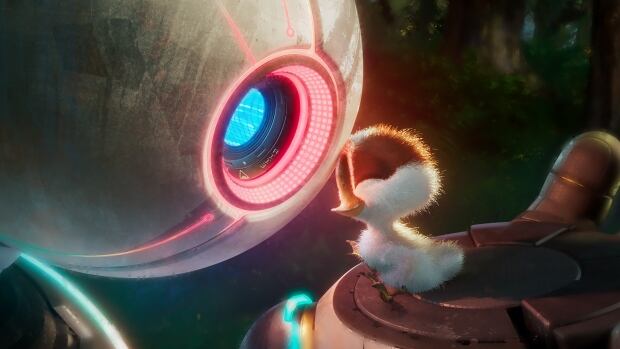
The Wild Robot, the latest film from DreamWorks Animation, arrives with an impressive pedigree. Director and writer Chris Sanders has given us Lilo & Stich, the exuberant and moving How to Train Your Dragon and the wild and wooly family of The Croods.
The source material is the beloved children’s novel of the same name by Peter Brown. Turning the book, made of short chapters and simple illustrations, into an animated epic is no easy feat.
When The Wild Robot stays true to the understated source material it soars, but when Sanders’ instinct for spectacle and sentiment get the better of him, it stumbles.
WATCH | The Wild Robot trailer:
The story opens with a robot and a predicament. Rozzum unit 7134, a people-pleasing robot from Universal Dynamics, washes up on the shores of a forest.
Eager to find customers to serve, Roz goes about investigating her environment. What she finds is the chaos of nature, an entire ecosystem of animals chasing, hunting and devouring each other.
Watching Roz trying to find a customer as various critters chirp and bark makes for a promising start. “How would you rate this service on a scale of 1 to 10?” asks the robot while plastering every animal with a Universal Dynamics sticker.
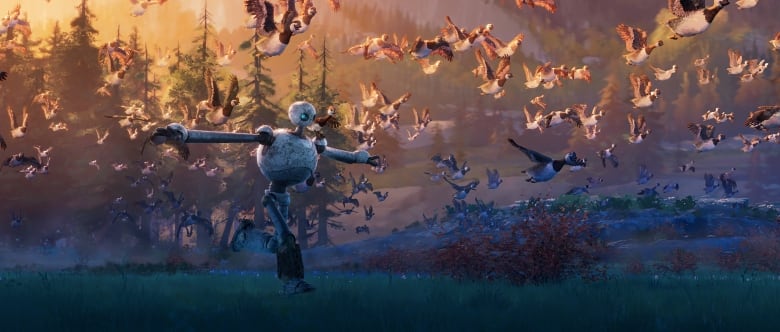
Expressive environments and a sense of simplicity
To compliment the natural environment, director Sanders decided to approach the world of The Wild Robot with a more expressive animation style, inspired in part by the hand-painted cell animation of 1942’s Bambi and the flowing forest life found in the work of Japanese animation master Hayao Miyazaki.
There’s a beautiful painterly quality to the plant life and landscapes that prioritizes expression over realism.
Then there’s the face of the robot Roz — a metal sphere with two piercing eyes. What Roz shares with other great robot designs is a sense of simplicity.
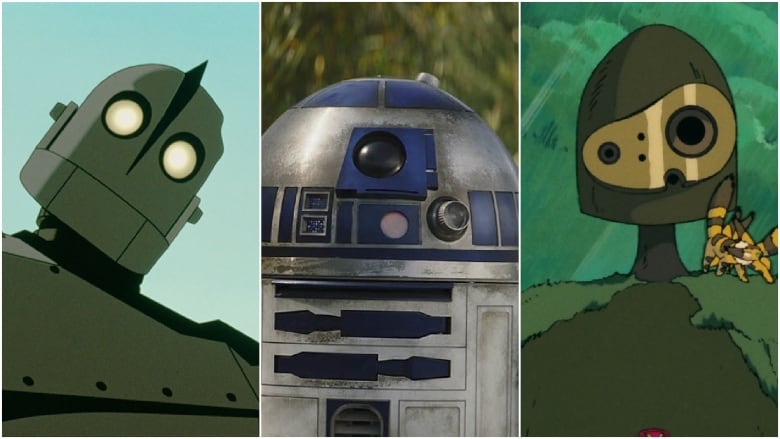
Rather than slipping into the uncanny valley where excessive details and realism can be off-putting, some of the most powerful robotic faces are the plainest. One eye or two. A simple line for a mouth. Or perhaps none at all all.
The magic of cartooning is how our minds fill in the blanks, imprinting emotion onto these empty canvases.
Commotion with Elamin Abdelmahmoud8:42The allure of the new animated film The Wild Robot
Montreal illustrator and avid The Wild Robot enthusiast Arizona O’Neill joins guest host Ali Hassan to discuss whether the DreamWorks adaptation of the popular children’s book lives up to expectations.
Actors bring charm, playfulness
After the pleasant chaos of Roz’s arrival, The Wild Robot finds its real purpose as she becomes an accidental mother to a gosling named Brightbill.
Pinktail, a mama possum with a brood of her own breaks the news: Roz needs to teach the little goose to eat, swim and fly in time for the coming migration. Finally given a task, Roz is soon laser-focused on getting Brightbill ready for fall.
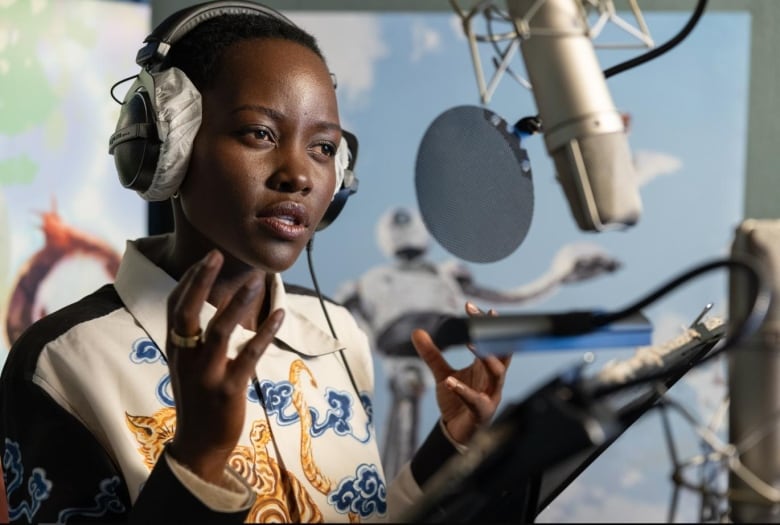
As with the art, the casting of the various actors is another highlight.
Catherine O’Hara lends her sardonic charms to Pinktail. Oscar-winning Lupita Nyong’o has played her share of serious and stoic roles, so it’s a pleasure to hear the joy and sense of playfulness she brings to Roz.
Nyong’o carefully calibrates her performance, reserved and automatic at first, slowly adding more depth as Roz’s robot programming evolves.
The unmistakable baritone of Matt Berry is perfect as a grumpy beaver, but the surprising highlight is Pedro Pascal as Fink the fox. While it may seem Pascal is everywhere these days, he brings a delightful sly performance as a predator fighting his natural instincts.
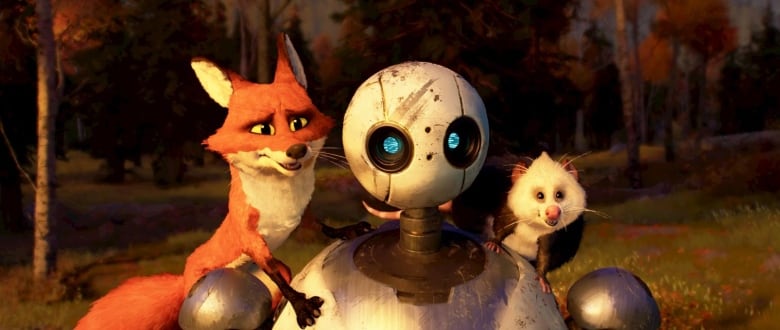
The spell is broken
With its expressive art and inspired character design, the best parts of The Wild Robot speak for themselves, but a lack of confidence in the audience leads to heavy-handed moments where clunky dialogue breaks the spell.
While the novel held back and left room for the reader’s imagination, as the movie builds toward a pulse-pounding climax, Sanders’ instincts gum up the works with saccharine storytelling. Whether its Roz explaining how she’ll “overcome her programming” or when an older goose named Longneck says Brightbill has a chance “if where his wings end, his heart can pay the balance.”
WATCH | The Wild Robot learns about life in the forest:
(Sidenote — I will admit I might be a little hard on The Wild Robot since I recently watched Flow, a remarkably enchanting movie filled with animals and adventure and not a word of dialogue.)
As the story shifts into a furry forest utopia, the ragged wildness that made the movie so refreshing fades away.
That’s not to say it’s totally tamed, but rather that Sanders’ lack of confidence in the audience (and his art) makes for a missed opportunity — a good cartoon that could have been great.